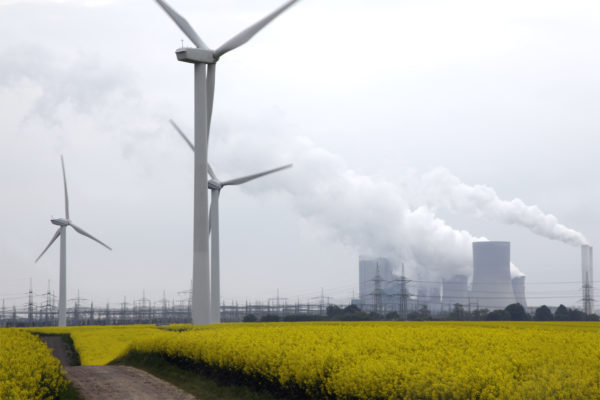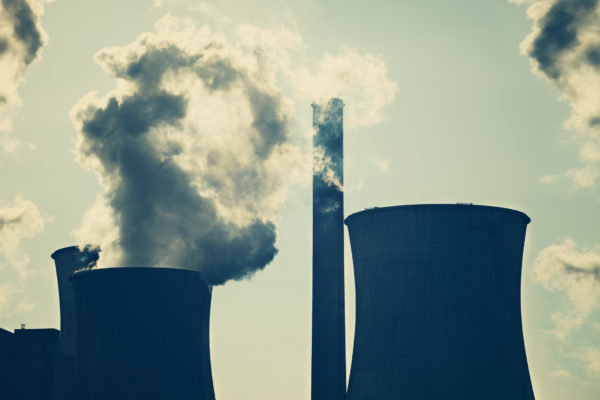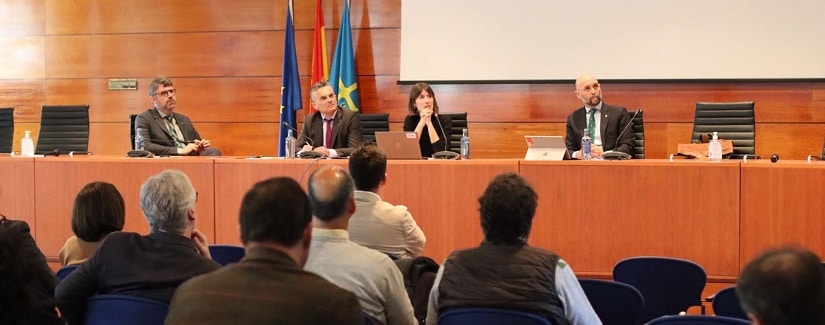The largest and most important electricity providers on the planet are leading significant processes of structural change under three premises: decarbonization, decentralization and digitalization, grouped together as “The 3 Ds”. And they are doing so as part of an energy transition process in which electricity generation is beginning to seek out ways to renew and change their paradigms to reduce their carbon footprint. The 3 Ds must never be considered as independent; the existence of one does not make sense without the existence of the others.
Decarbonization: for a greener footprint
Over the past two decades, international organizations have repeatedly stated that not enough is being done to avoid a rise in temperatures which will bring about an environmental catastrophe and, as a result, will effect a large part of the population.
The Paris Agreement, established at the 21st Conference of the Parties (COP21) to the United Nations Framework Convention on Climate Change, includes a commitment to reach greenhouse gas (GHG) emission neutrality between 2050 and 2100.
In regards to the energy sector, this means two large action groups:
– A greater need for electricity production due to the switch to electricity by major industrial, domestic and transportation applications that currently use fossil fuels. This transfer will, of course, be limited by the implementation of savings measures and the rationalization of energy consumption.
– A significant increase in the amount of renewable energy sources, which involves major challenges in all elements of the energy matrix: generation, transportation, distribution and consumers.
Faced with this urgency, the markets anticipate greater activity from renewable energy sources and, as a result, electricity providers are changing their operating models to reduce their carbon footprint and introduce renewables into their businesses.
According to The Economist Intelligence Unit, in 2017 non-carbon emitting sources represent 20% of the total energy matrix worldwide. The global trend still sees coal, natural gas and oil as the primary energy generation resources.
The share of carbon-free sources in the world energy matrix has increased in recent years. Wind and solar energy lead the transition and, as a result, investments by the private sector focus on that area.
The European Union is implementing public and private policies that tend to penalize CO2-emitting technologies and subsidize those based on renewable energies.
Specifically, many companies have segregated their assets into different companies, both in generation and commercialization, for possible transactions on the one hand and aimed, on the other hand, at providing a green product portfolio that meets the demanding requirements of public or private clients who prioritize renewable consumption.
The share of carbon-free sources in the world energy matrix has increased in recent years. Wind and solar energy lead the transition and, as a result, investments by the private sector focus on that area.

How is decarbonization achieved?
The necessary investments are being supported in Europe with public subsidy policies, especially in wind energy, while in the area of photovoltaic solar energy the significant decrease in the cost of installation is leading to the development of power plants generating hundreds of megawatts (unviable just a few years ago), which would be able to compete in a free market even without subsidies.
It is difficult to determine when the new storage technologies will be available in large volume and at a competitive price to provide the necessary backup for demand peaks. That is why it is necessary to use all current generation technology during the transition, as well as the power and perfection of international interconnections, repumping stations and demand management systems.
In any case, analysis indicates that the closure of a conventional thermal power plant would require investment in more efficient combustion technologies in terms of emissions, which would introduce a capital cost with low usage rates.
In that situation, in the area of risk and insurance, in addition to movements on the derivative generation assets in the decarbonization strategies, the assets to be extinguished would be affected which, while still with some residual life, could receive reduced investments in upgrades and improvement, especially in regards to the regulation and control measures at conventional thermal power plants, and in maintenance programs.
Decentralization: another electricity generation angle
There are numerous ways to decentralize electricity generation on different scales. This refers not only to the diversity of sources in the energy matrix, but also geographically, financially and even technologically.
In recent decades, a change has been made to the generation layout, switching from production almost exclusively at large power plants owned by “professional” companies in the 1980s to the addition of new agents, such as industries from areas that aim to optimize general energy consumption, providing production to the grid through cogeneration units, mini-power plants, waste reuse, and wind and photovoltaic farms, with a very wide range of installed power and highly diverse operating structures, but always within the business realm.
Large electricity consumption centers, far from large generation plants, represent losses in transformation and transportation that can be compared to effective consumption.
The decrease in costs in small-scale renewable generation and in electronics is enabling advancement by including the consumer by developing the “prosumer” figure, both producer and consumer, whether independently or cooperatively, who produces energy and “sells” it to the grid when production exceeds demand and “purchasing” it when demand exceeds production.
That would bring production closer to the consumption centers, reducing losses associated with transportation, while diversifying the energy matrix, integrating not only renewable production technologies -primarily photovoltaic solar panels due to their simplicity and efficiency with regard to the investment cost-, but also available electricity storage capabilities, such as batteries that are also used in mobility.
Along these lines, the European Union is collecting a variety of initiatives that aim to lay the foundations for a common system that, although some countries already have initiatives of this type, make it possible to establish a framework to defend interests within the technical viability of electrical system operation.
Digitalization: the path to Industry 4.0
A nadie se le escapa la creciente disponibilidad y asequibilidad tanto de dispositivos de medida como de su conexión a la red y la capacidad de tratamiento y análisis de datos.
El sector eléctrico no sólo no es ajeno a ello, sino que la Digitalización, a través de conceptos como Industria 4.0 o Internet de las cosas (IoT, Internet of Things) va a jugar un papel imprescindible en conseguir que los otras dos D lleguen a materializarse.
Como mero ejemplo, la creciente implantación de contadores inteligentes ya está permitiendo a las compañías un mejor conocimiento de los perfiles y necesidades de los clientes adaptando la oferta de forma individual y, a la inversa, ‘empoderamiento’ del cliente al tener un mayor control de sus consumos y de la oferta de las compañías comercializadoras.
Así la profusión de dispositivos de medida de control conectados, así como el tratamiento de la información por ellos generada, permitirá a los agentes involucrados, reguladores, operadores del sistema, generadores, distribuidoras, comercializadoras,, consumidores y ‘prosumidores’, optimizar su interés sobre la base de:
– Integración de manera eficiente de una producción atomizada en diferentes niveles de la red.
– Mantenimiento de la estabilidad del sistema, mediante la agregación y actuación en tiempo real de activos de generación y cargas industriales, consiguiendo una regulación precisa de la frecuencia y respuesta a la demanda.
– Supervisión de la red e identificación de errores, fraudes, etc.
– Pronóstico de la producción renovable, con una mayor capacidad de predicción de las necesidades de generación con combustibles fósiles.
– Gestión de las instalaciones de ’prosumidores’ integrando las funciones de generación, consumo y almacenamiento de energía, tanto en forma de cooperativa como para cada uno de sus integrantes.
– Gestión técnica de las instalaciones de producción para optimización de eficiencia energética y de las operaciones de mantenimiento, tanto en la prevención de averías como en la programación de las mismas.

Conclusion
The electricity sector, responsible for approximately 25% of the world’s greenhouse gas emissions, is facing challenges deriving from the need and demand to reduce emissions, along with the need to meet the demand of sectors that will convert their energy source to electricity.
The European Union is taking actions to create an environment that enables the optimization of consumption, production and system efficiency, in which production decentralization and digitalization play very important roles.




